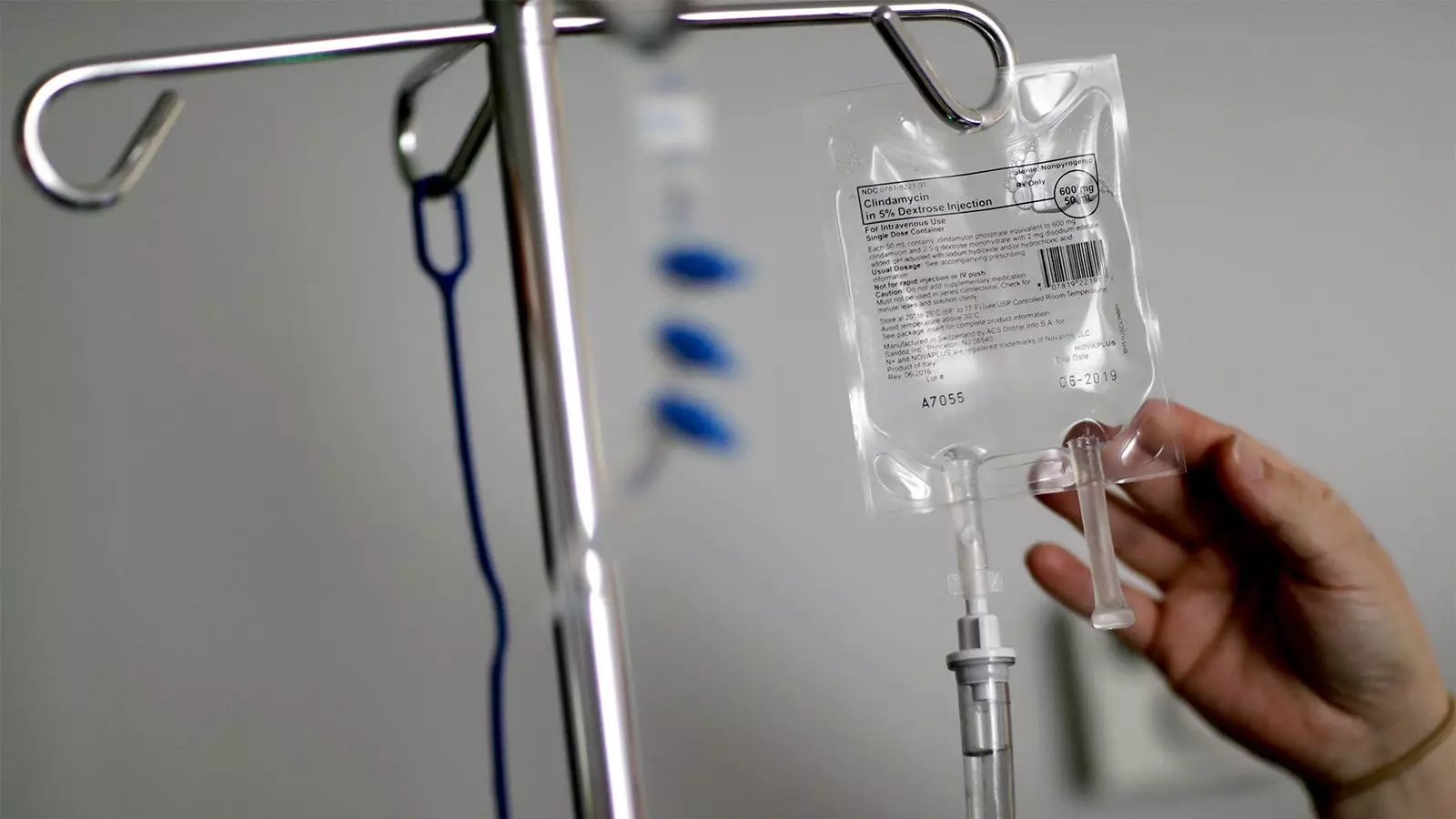As Hurricane Milton approaches, federal officials are scrambling to relocate crucial hospital supplies to ensure they do not fall into the storm’s devastation. The threat looms particularly large for intravenous (IV) fluids—a critical component in patient care—especially in light of the recent challenges faced by manufacturers such as Baxter International, which suffered significant disruptions due to flooding at its North Carolina plant. The landscape of IV production has become particularly fragile, leaving hospitals across the United States grappling with shortages at a time when patient care remains imperative.
Medical device manufacturer B. Braun is stepping up to navigate these challenges by proactively moving its stock of IV bags away from its Daytona Beach facility, which has been closed as a precaution. According to spokesperson Allison Longenhagen, production is anticipated to resume soon, demonstrating a quick response that may mitigate the impact of further supply shortages. This situation emphasizes the fragility of the current supply chain and serves as a call to action for the healthcare sector to improve preparedness for natural disasters.
Approximately 2 million IV bags are utilized by U.S. hospitals daily, a figure that underscores the reliance on these life-saving supplies. However, the ramifications of recent disasters, including Hurricane Helene, have prompted hospitals to initiate conservation protocols for their existing IV supplies. Experts monitoring the supply disruptions feel cautiously optimistic about B. Braun’s preparedness in this instance. Unlike Baxter, which faced unforeseen circumstances, B. Braun has taken proactive measures, indicating a trend toward better anticipation of supply chain perils among IV fluid manufacturers.
“The foresight exhibited by B. Braun represents a significant shift in how manufacturers should approach hurricane season,” remarked Mike Ganio, PharmD, a specialist in drug shortages with the American Society of Health-System Pharmacists. While previous manufacturers may have faltered in the face of emergencies, recent actions signify a collective push toward safeguarding necessary medical supplies.
In the face of this ongoing crisis, the American Hospital Association has made a compelling case to the Biden administration, urging the invocation of defense production authorities to expedite IV fluid manufacturing. This call comes as a reflection of hospitals’ urgent need for more significant support to alleviate the effects of the reported shortages. U.S. Health Secretary Xavier Becerra has acknowledged the disruption moving through supply chains but has yet to activate government emergency powers to bolster production timelines.
Becerra’s communications highlight the government’s attempts to explore a variety of temporary measures aimed at addressing the scarcity, including the potential for importing foreign supplies and extending the shelf life of existing products. However, the lack of immediate action raises concerns among health professionals regarding the depth of these considerations. The need for rapid deployment of resources echoes through previous national crises, such as the baby formula shortage, when urgent government intervention has proved essential.
The FDA has categorized certain IV fluids, such as saline solutions, on its drug shortage list long before Hurricane Helene had an impact. As hospitals scramble to meet patient needs, they are permitted to compound their solutions—a temporary workaround that may deter immediate crises but does not substitute for robust manufacturing capabilities.
Ultimately, this situation emphasizes the urgent need for collaborative efforts among manufacturers, healthcare facilities, and government agencies to create a more resilient supply chain. The current approach to managing disruptions has shown both strengths and weaknesses. While B. Braun’s actions exhibit a level of readiness previously uncharacteristic, the broader ecosystem of IV fluid production calls for improved infrastructure, contingency plans, and rapid response capabilities to safeguard patient care during emergencies.
As the health sector gears up for potential impacts from Hurricane Milton, the stakes are high. Moving forward, a comprehensive strategy that combines foresight, industry cooperation, and governmental response will be integral in bolstering supply chains and safeguarding essential medical supplies against future adversities.


Leave a Reply